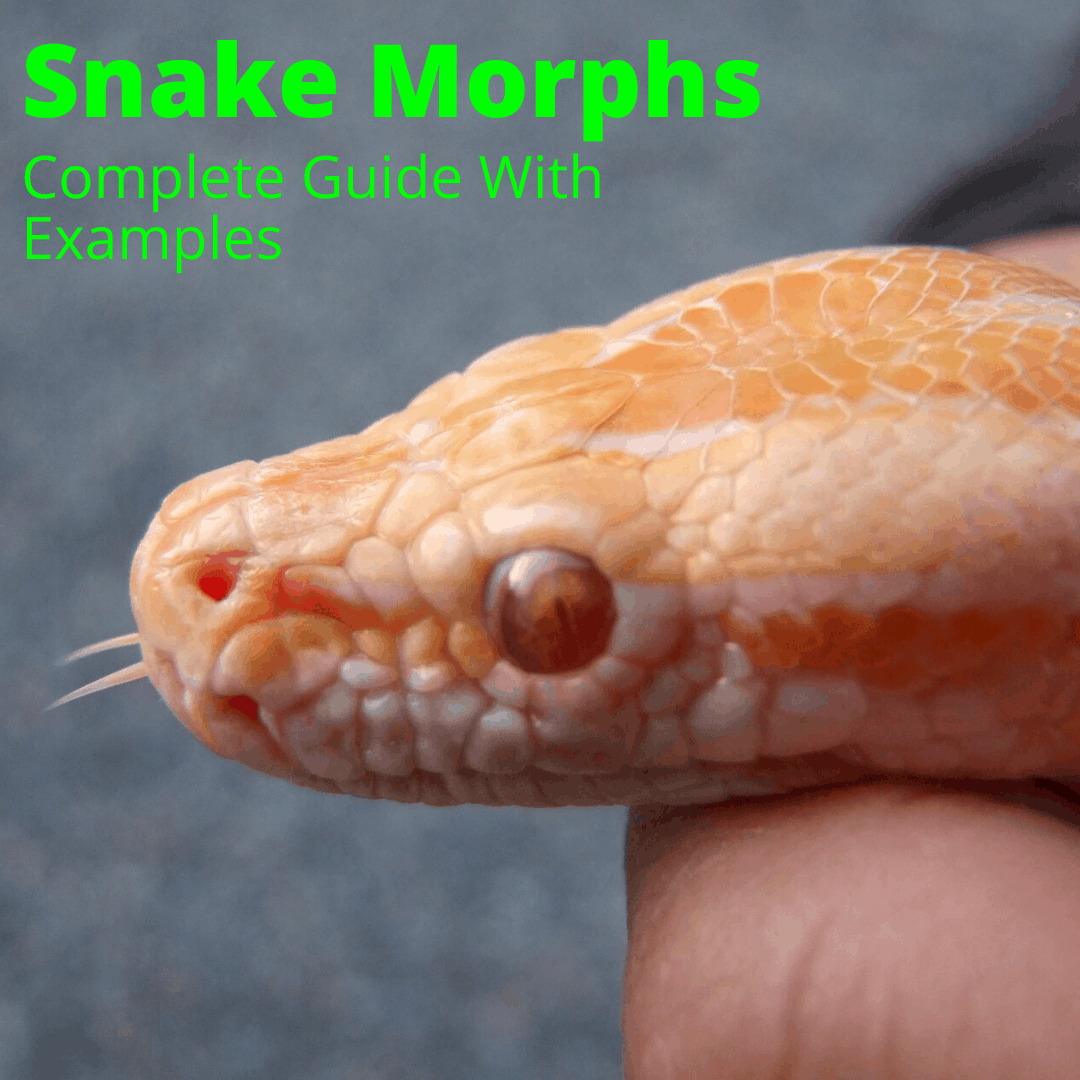
Rare morphs cost up to $40,000.
But more common varieties are more accessible.
Almost anyone can own one, though keeping a snake in general does cost money, the same as any other pet.
Is it worth it?
For most of us: yes.
But snake morphs are not like other pets. They are endlessly fascinating. Breeders keep coming up with more beautiful and more unusual colors and patterns.
The world of snake morphs is a wonderful world, so let dive into that world and see what it is all about.
Table of Contents
Snake Morphs—What Are They?
“What are snake morphs?” you may ask. The term is commonly used to refer to snakes that look different from regular snakes of the same species, despite being the exact same species.
For example, a spider ball python and an albino ball python are both ball pythons but their coloration and pattern are different from the same original species of snake.
Breeders use different types of snakes to create morphs of different colors. There are snake species that are commonly used to produce Morphs, like Ball Pythons, Kingsnakes and Corn Snakes.
The snakes that are generated from this process are primarily kept as pets. They are generally some of the most beautiful snakes in the world.
How Snake Morphs Are Created
As explained above, a snake morph is the result of combining different species of snakes to come up with a snake that is of varying color and skin patterns. So how exactly are they created?
A breeder identifies the type of snake that they need to produce the morph they want. They often go to great lengths to procure the snakes they need, paying whatever it costs to import them from far away. All that matters is that they are able to achieve the desired result.
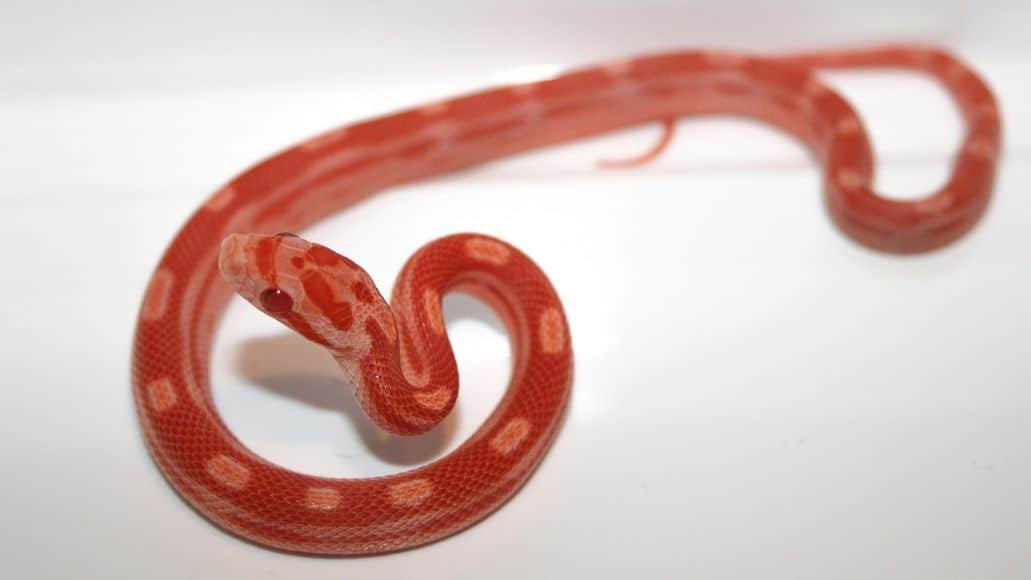
You don’t have to be a scientist to become a breeder. Anyone can do it.
Say you want an albino ball python. You have to breed it from an albino parent. The end result is a hot albino ball python. This tells you that it has albinism traits which it has inherited from the parent.
You can also take two morphs of different coloration. Let’s say you breed a snake with a black pattern and another that does not have any black. They will produce snake morphs that either lacks the black coloration or that have it.
Let’s take a closer look at the snake species that are most commonly used to create morphs.
Common Snake Morphs
Corn Snakes
Corn snakes are among the most commonly bred non-venomous snakes in the United States. They are widely found in the southwestern part of the United States.
Some believe the name ‘corn’ comes from the color pattern on its belly that resembles the kernel pattern of corn. Others say it comes from the fact that this snake is commonly found in corn and other crops.
Another name for corn snakes is red rat snakes due to their reddish-orange or reddish-brown color. Their bellies are white and are checked with black.
It’s not surprising to find corn snake morphs with orange patterns on them, and often they also have two black stripes under their tails.
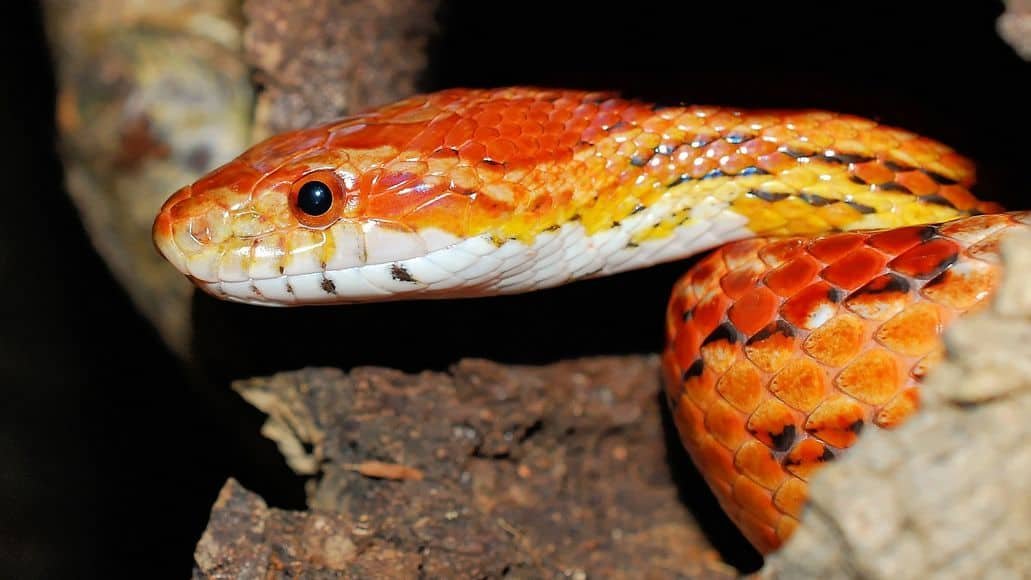
They make excellent pets for those that are interested in snakes, especially children. They never get big, either. They are slim and grow to between 18 and 44 inches long.
They can angle their scales out to let them grasp the bark of a tree. This enables them to climb and sit on trees for long periods. Their heads are described as a ‘spear shaped blotch’, their lips have dark vertical bars, their iris is red or orange, and they have round pupils.
Corn snake morphs resemble copper heads. Most people confuse them with copperheads, and this has led to many a corn snake being killed. Copperheads have hourglass markings, while corn snakes have random, blotchy markings. The copperhead’s belly is also not black and white checked.
Corn Snake Shelter
The most important thing is to give your corn snake morph a spacious place. Whatever you decide to use, be it a glass terrarium, a wooden enclosure, or something else, make sure it is large enough for your snake to grow in.
Make sure the top is secure. They are master escape artists. For help choosing the right terrarium, read our article on snake enclosures.
Keep the living quarters warm, and make sure to provide a hiding place. Fill the enclosure with plants to keep your corn snake comfortable.
Avoid using sand as the bedding, because it can cause congestion when it enters their nostrils. Note that the plants you use should not be alive, because the fertilizer in the soil is harmful to the snake. Head here for help on choosing the right bedding.
Corn Snake Morphs
Albino Corn Snake

It’s called albino due to its lack of pigmentation. It lacks melanin which is responsible for the dark color in animals. In corn snakes, albinism means that the snake has any combination of orange, pink, red, white and yellow.
Their eyes are either red-orange or white in color. It is also referred to as an amelanistic corn snake due to lack of melanin.
Okeetee Corn Snake
The Okeetee snake morph is also known as Abbott’s Okeetee Corn snake. It has thick black borders on its back and very bright colors in general. The blemishes and the scale color are separated by the dark edges.
The Okeetee snake morph starts out very small but can grow up to 5.5 feet in length. The Okeetee snake got its name from Hunt Club in Jasper County, South Carolina in the U.S.
Anerythristic Corn Snake
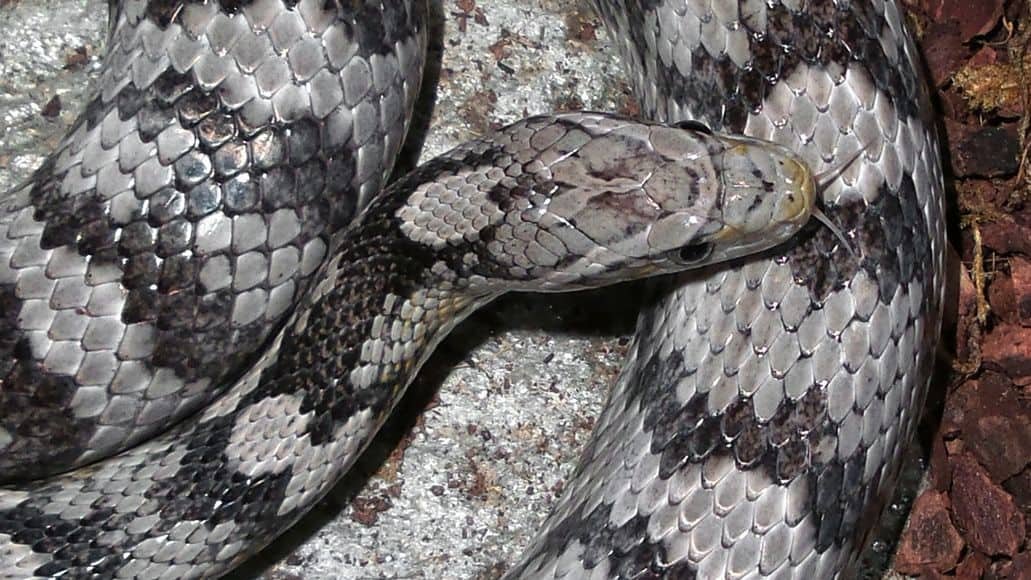
This snake morph completely lacks red pigmentation. Its scales are a mixture of black, grey and white. Occasionally there is some hint of the brown pigment, too. Some of them have a shade of yellow around the jawline.
Lavender Corn Snake
The lavender corn snake is a result of breeding a snow corn and a wild female snake. It was first created in the 1980s. It is dark grayish to light pastel lavender.
Black Corn Snake
Black corn snakes are of the anerythristic corn snake type. This means that they lack the pigment erythrin which produces yellow and red. As a result, they are gray and black.
Ball Python
The ball python is also referred to as the royal python. It originates in sub-Saharan Africa. It is a non-poisonous constrictor snake. It is smaller in size than most African pythons. Its small size and docile temperament have made it famous in the snake pet trade.

The name ball python comes from the fact that the snake likes to curl itself into a ball. On the other hand, the name royal python is derived from the fact that African kings used to wear it around their necks as an ornament.
An adult ball python can measure up to 6 feet, though most are smaller. The female ball python snake morphs are bigger, with mature ones measuring between 3 and 5 feet, while males are generally 2 to 3 feet.
They have stocky bodies and a small head. Their scales are smooth and have anal spurs on both sides of the vent. The males have larger spurs than the female ball pythons.
Most ball pythons are black and dark brown with light brown or gold sides and dorsal blotches. Their bellies are either white or cream and may sometimes have black markings.
At first ball, pythons were not very popular. This is despite them having beautiful colors and the perfect size and temperament to be pets. But they quickly gained popularity, when snake breeders started coming up with morphs of the ball python that instantly made it the most sought-after and expensive snake in herpeto-culture.
Ball Python Morphs
Albino Ball Python
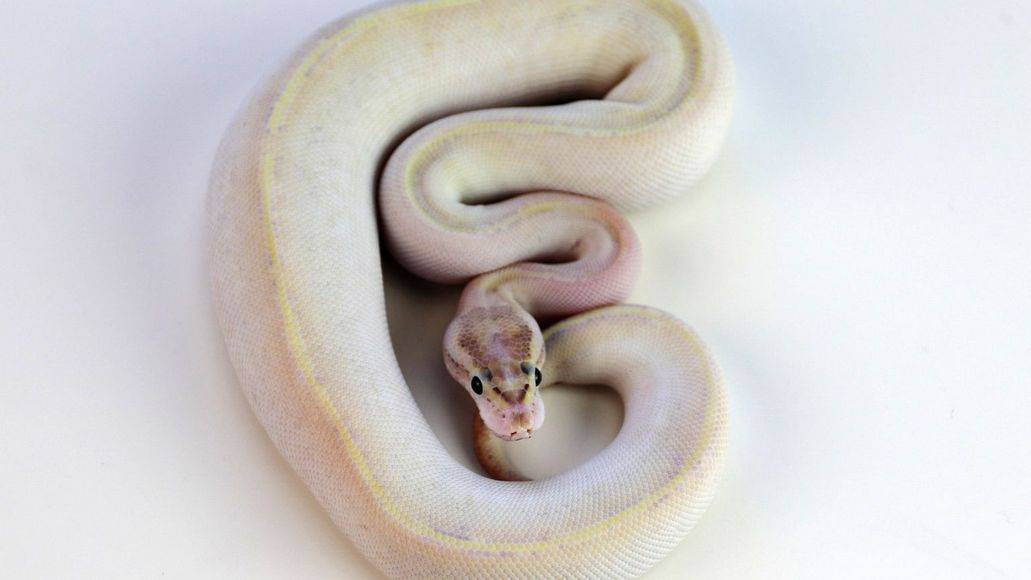
The albino ball python was the first proven snake morph produced. It has no black pigment which leaves it with a yellow and white pattern, red eyes or pink eyes. Its one of the most popular designer python morphs.
They come in high and low contrasts and it can be challenging to tell the difference. The high contrast variety has a yellow to white contrast. To produce the albino ball python, you need two high contrast hets. Breed normals that have strong dark patterns and less blushing within the model.
Piebald Ball Python
These have been in existence from as early as 1966. They originate from Accra, Ghana. The term piebald refers to their patches of black and white. This kind of pigmentation can happen to any animal, humans included.
This morph is in very high demand in the python world, due to its beautiful colors and markings. It’s a recessive trait that is partially unpigmented with different color and pattern morphs.
Axanthalic Ball Python

This is a snake morph that produces snakes with varying shades of silver/grey, brown, white and black. They tend to develop more brown color as they age. Few of them keep the original color they had as juveniles.
Vanilla Ball Python
This is a co-dominant morph. It has a more normal appearance except for two clear differences. The vanilla is brighter than the normal ball python and it also exhibits a faded color around the top of its head.
Blue Eyed Leucistic Ball Python
This morph is also called the blue-eyed Lucy. Its one of the rarest ball pythons in existence. It is solid white with sharp blue eyes. Morphs that produce this spectacular snake are Mojaves, Butters, Phantoms, Lesser, and Het Russos.
Butterball Python
This snake morph results from breeding the Mojave, Russo, Lesser and Phantom genes. It resembles the lesser ball python, but they are from a different lineage.
Their colors brighten up as they age, so the older the Butterball python is, the brighter it is in appearance. That’s how you tell the difference between the Butterball python and other types of ball python morphs.
Champagne Ball Python
The champagne ball python is a dominant morph. It is an orange colored snake with markings. Its belly is all white.
Snake Morph Food
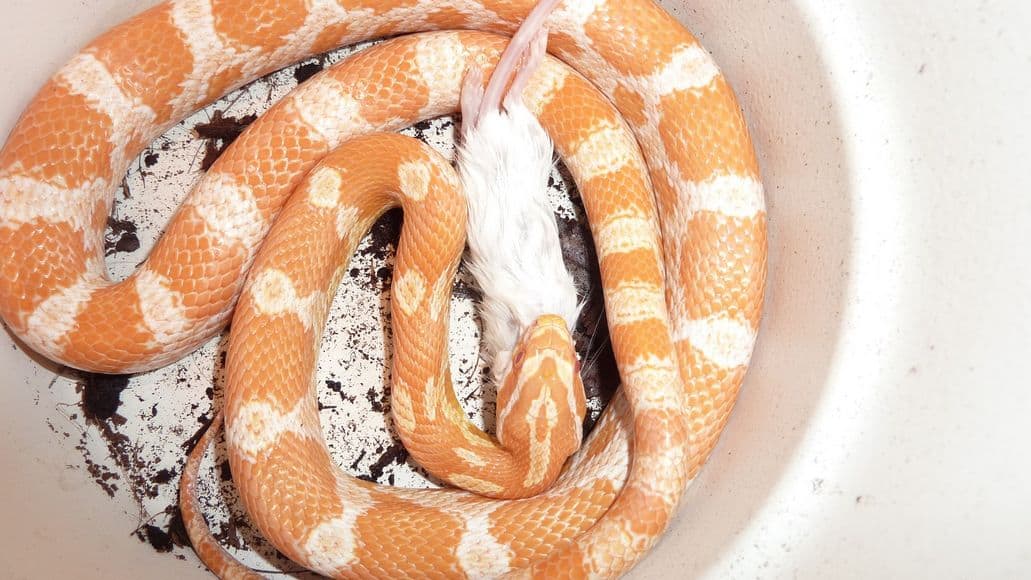
Just like any other snake, or any animal for that matter, snake morphs like to eat the same food they get in the wild. That generally means live rodents or other small animals like amphibians. Obviously, getting your snake live rodents is not easy.
On top of that, many owners don’t want to watch their snake eat a live rodent. And to be honest, feeding them live rodents is somewhat dangerous, too. The rodents fight back and could injure your snake.
So what do you do?
The best option is to get frozen or pre-killed rodents. The frozen variety are easiest to find and store. You can get them on Amazon, for example:
Make sure to let the rodent thaw completely before feeding it to your snake morph.
To let your snake feel like it hunted the rodent, hold it using a forceps and move it around a bit. Let the snake strike it, grab it and swallow it.
Another option are snake sausages. These are sausage-shaped nutritionally balanced foods that are made specifically for snake consumption.
Quail eggs are also good for your snake. If you have an egg-eater, they are the only food you should feed it.
Feed your snake occasionally. Once every two weeks is generally sufficient, though it does vary by species, age and time of year. Always provide clean water to your snake.
Reproduction And Development Of Snake Morphs
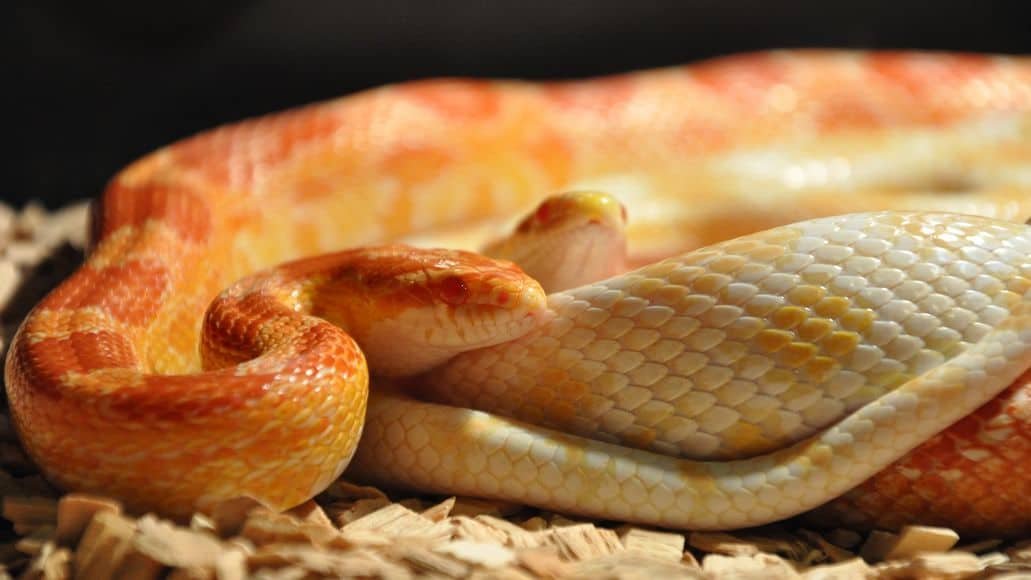
Corn snakes mate mostly in the spring and fall. The female corn snake pops out 10 to 30 eggs. They lay them in rotting stumps or vegetation.
This ensures that the eggs get enough heat and humidity to incubate. When breeding at home, use a reptile incubator for snakes to ensure the proper environment.
After the female corn snake lays her eggs, she leaves them and never comes back. The baby snakes are born after about two months. They are between 10 and 15 inches long, patterned like the adults.
The life expectancy of corn snakes is about 22 years while in captivity, but they live less than that in the wild.
Corn snake morphs are calm and very easy to care for. This has made them the most loved snake pets. Be careful though because they are very adept at escaping from their homes.
Female ball pythons mature between 27 to 31 months. The males are ready for reproduction at 16 to 18 months. Their reproduction season falls between September and November corresponding with the rainy seasons.
The female mate with several males before the female lays eggs. The reproductive organs of the male ball python are longer and are used to stimulate the female.
Mating takes place by the male ball python wrapping itself around the female. After successful mating, the female stops eating as the eggs develop.
Upon maturity, the female lays from two to eleven eggs. Unlike the corn snake female, the ball python female coils around its clutch of eggs for around two to three months until they are ready to hatch.
The baby pythons then slit open the egg shells and come out. They are 65 to 103 grams at birth. They become independent immediately but hang around their birth environment for a few months before wandering off.
Snake Morph Health
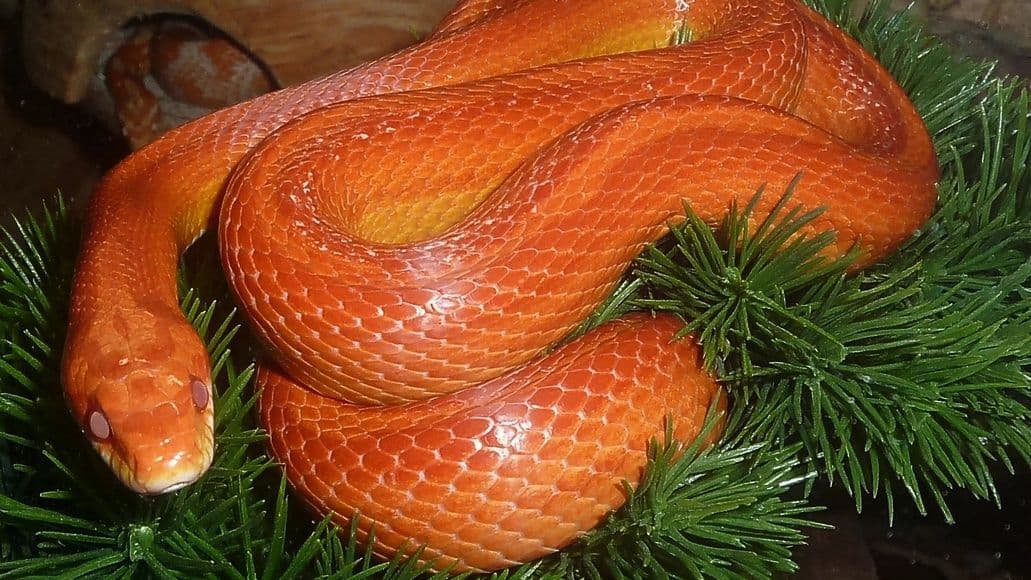
After acquiring a pet snake morph, the most important thing to do is to ensure that your snake stays healthy. Be very careful about the meals you give them, about keeping them and their environment clean and keep an eye out for signs of the possible sicknesses they could suffer from.
Every snake morph has its own characteristics that show if it’s in good health or not. Be careful to note any changes in your snake that may be indicators of ill health, and take the necessary measures if you notice anything out of the ordinary, which often means a visit to a vet.
Common Diseases Affecting Snake Morphs
Dermatitis
Dermatitis is a disease of the skin which is characterized by blisters and rapid shedding in snakes. If you notice that your snake’s surface is full of blisters then it’s probably because of this ailment.
It’s primarily caused by an unclean living environment, temperature fluctuations, or a habitat that is either too cold, too hot or too damp. If you notice signs of dermatitis, fix any of these issues immediately. Ensure that the snake’s home is clean, dry and warm. Consult your veterinarian for medication.
Respiratory Disease
Snakes exhibit the same symptoms as humans and other animals when they suffer from respiratory problems. These include labored breathing and mucus in the nostrils and mouth.
The leading cause of respiratory disease is exposure to a frigid and damp environment. Before you rush to the vet, keep your snake dry and warm and if symptoms persist seek, veterinarian advice on how to manage it.
Stomatitis
Stomatitis is an inflamed and sore mouth. It’s a disease that can affect other animals too. It inhibits your snake from eating.
Symptoms include loss of teeth, and a visible white substance in the mouth. This infection is fatal, so contact your vet immediately if you notice any symptoms.
Costs Of Keeping Snake Morphs
The process of acquiring snakes of different genes from as far as Africa makes this business an expensive affair.
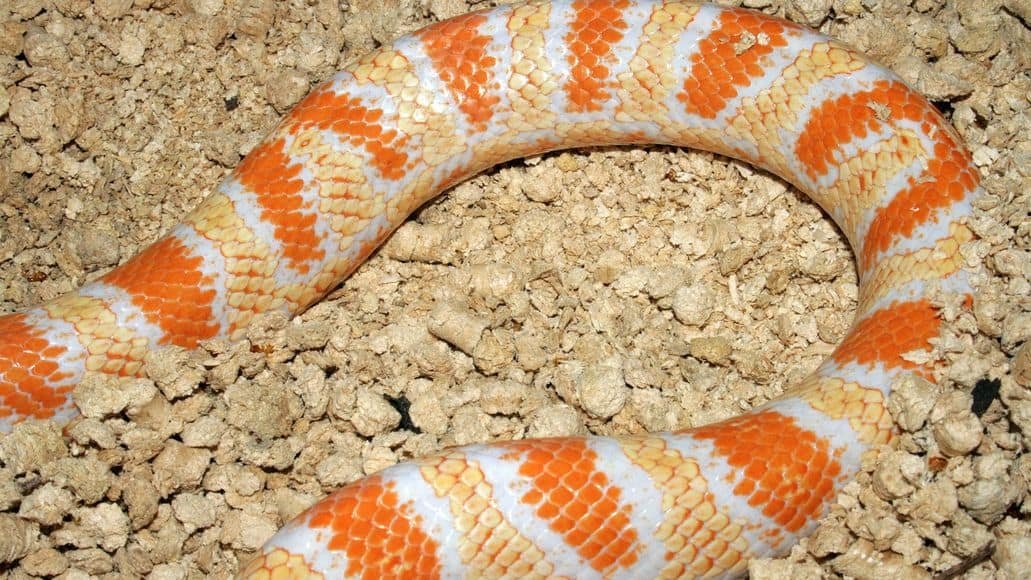
For example, if the original snakes are imported from far away, the transportation cost is a lot higher than getting a more common that comes from snakes within your country. That raises the price of the resulting morphs considerable.
As a result, different snake morphs are rated according to the cost of breeding and also their beauty. That is why breeders go to any length to ensure high quality snake morphs.
To give you an idea of the kind of expense you might be looking at, the lavender albino ball python, the striped ball python, the palmetto corn snake and the albino ball python are among the most expensive snake morphs on the market. Their prices range from between $4,000 to $40,000, with the lavender albino being the most expensive of them all.
Before you go out and get the snake morph you want, it is vital that you also consider all the associated expenses and make sure you are able to afford it. That includes unexpected costs like veterinary bills.
In addition to the cost of the actual snake, the following are other potential costs of owning a snake morph.
Transportation Cost
This depends on where you are buying your pet snake. If its closer home then the costs are lower, but if you are importing your snake, they increase dramatically.
Licenses
Just like any other animals you have to acquire the necessary license for you to be able to own a snake. Always adhere the rules and regulations governing exotic animals in your specific area. Licensing costs range from nonexistent to fairly steep.
Other Costs
Owning a snake morph means an umber of other costs that will add up. You need to feed your snake well, you need to provided it with a goo enclosure and all of the accessories it needs, you need to give it new substrate every month and you will need to pay for medical expenses. That includes both regular checkups and emergency care, for which it is a good ideas to set up an emergency fund.
Snake Morphs: Final Thoughts
Scary as this hobby might be to many, it is an incredibly fascinating one to some of us. But it is not a cheap one. All of the associated costs make it a hobby best suited for those who are well-off.
As for the breeders, things can only get better as they scramble to produce the best, most beautiful snake morphs in the world. And the more striking these animals become, they will slowly continue to make the transition from a feared animal long considered our enemy, to a friendly domestic pet.
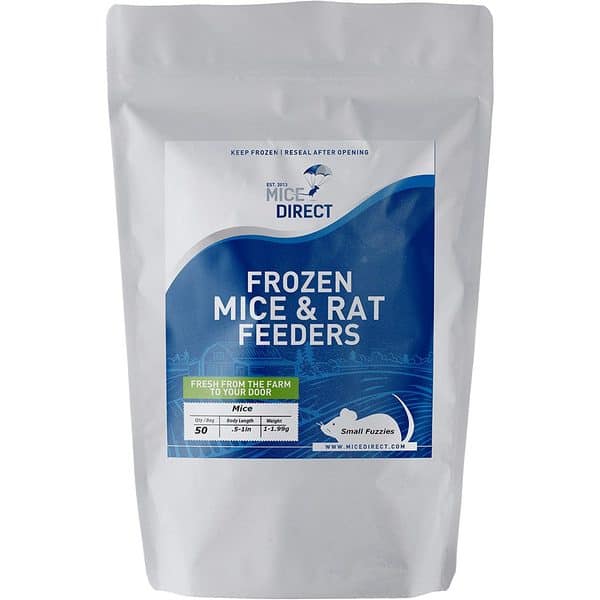
Cassandra Skutt says
Can you give me any resources into Michigan snake (ball python, specifically) ownership and breeding licensure and laws?
I am looking into it and am having some trouble finding the right information.